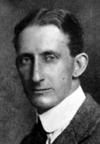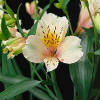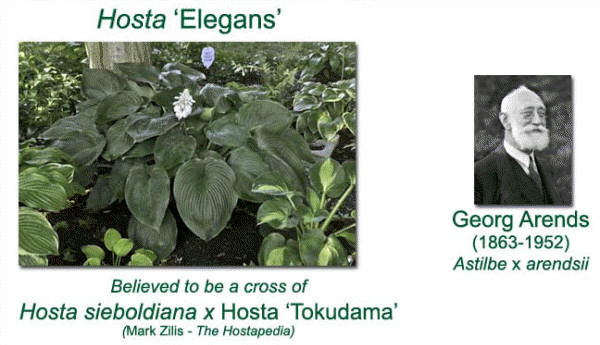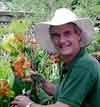Comments
from Mr. PGC: Throughout
history, many people have made lasting contributions to the
world of plants. In these pages, we hope to pay tribute to
some of them. Our concentration will be primarily on those
who have introduced plants to the gardening world, those who
have helped spread the word about gardening and those who
have made significant contributions to landscaping and
landscaping design around the world.
This list will be constantly growing as we add
new names. If you have someone who you think should be on
the list, please send us an
Email.
|
|
 |
 |
|
|
 |
|
John Aislabie |
|
|
 |
|
 |

The shrub,
Abelia
chinensis (Chinese Abelia) is named for him. It was introduced into
England in 1844.

|
|
 |
|
 |
 The
genus,
Achillea (Yarrow), was named for this Greek mythical
hero of the Trojan wars who was the central character of
Homer's, Illiad. Common species of yarrow include
Achillea
millefolium and
Achillea filipendulina. The
genus,
Achillea (Yarrow), was named for this Greek mythical
hero of the Trojan wars who was the central character of
Homer's, Illiad. Common species of yarrow include
Achillea
millefolium and
Achillea filipendulina.

|
|
 |
|
 |
The genus,
Adansonia, is named for
this French botanist. Adansonia digitata is the genus of the
Baobab or monkey bread tree found in
Africa.

|
|
 |
|
 |
|
|
|
 |
|
 |
|
 In 1699, he inherited Studley
Royal estate (Fountains
Abbey and Studley Royal Water Garden) in North Yorkshire,
England and designed the famous
crescent shaped moon
ponds a quarter of a century later. He brought the natural
landscape into the garden and surrounded it with large
yew
hedges. In 1699, he inherited Studley
Royal estate (Fountains
Abbey and Studley Royal Water Garden) in North Yorkshire,
England and designed the famous
crescent shaped moon
ponds a quarter of a century later. He brought the natural
landscape into the garden and surrounded it with large
yew
hedges.

|
|
 |
|
 |
English gardener known for hybridizing
snowdrops (Galanthus sp.).
Plants named for him include
Galanthus x
allenii,
Anemone nemorosa 'Allenii' and
Corydallis x allensii.

|
|
 |
|
 |
 Renowned English hybridizer of
Dianthus species and author of the 1950 book,
The Perpetual Flowering Carnation (1907),Carnations,
Pinks and All Dianthus (1926) and 1953's
Carnations for Everyman which is still available on
Amazon. He and his brothers, Edward and George, also owned a nursery in Sussex,
England
and was known for his displays at the
Chelsea Flower Show near London.
He received the
Victoria Medal of Honour from The
Royal
Horticultural Society in 1949. Renowned English hybridizer of
Dianthus species and author of the 1950 book,
The Perpetual Flowering Carnation (1907),Carnations,
Pinks and All Dianthus (1926) and 1953's
Carnations for Everyman which is still available on
Amazon. He and his brothers, Edward and George, also owned a nursery in Sussex,
England
and was known for his displays at the
Chelsea Flower Show near London.
He received the
Victoria Medal of Honour from The
Royal
Horticultural Society in 1949.
The plants resulting from his hybridizing
program bear the name
Dianthus x allwoodii and, perhaps, the
most widely grown cultivar is 'Doris'.

|
|
 |
|
 |

Alstroemeria
pelegrina, commonly
called the Peruvian Lily, is named after the Baron who was a
student of the famous,
Linnaeus.

|
|
 |
|
 |
Lady Sarah
Countess of Amherst spent many years in India and
introduced many of the plants she found there back to her
native
England. Included in this group are
Clematis
montana and
Anemone vitifolia.

|
|
 |
|
 |
 Plantsman and horticultural author, he was
founder of the Alpine Garden Society. He travelled widely
and brought many exotic plants back to
England
to be introduced. Plantsman and horticultural author, he was
founder of the Alpine Garden Society. He travelled widely
and brought many exotic plants back to
England
to be introduced.
Plants named for him include
Sedum 'Bertram
Anderson',
Thymus pulegiodies 'Bertram Anderson', Galanthus 'Bertram Anderson', and
Pulmonaria
longifolia 'Bertram Anderson'

|
|
 |
|
 |
|

|
|
 |
|
 |
Arends was a very prolific breeder of several species of
herbaceous perennials
with, perhaps his most famous plants coming from genus,
Astilbe. He owned a
nursery and lived in Ronsdorf, Germany where he developed over 74 cultivars of
the genus
which were given his name,
Astilbe x arendsii.
He used 4 species in his breeding efforts
including
A. japonica,
A. thunbergii,
A. astilboldes and
A. chinensis.
Over his long career, he also hybridized species of
Bergenia,
Sedum,
Phlox and
Campanula.
In 1905, he introduced a
hosta which he named
Funkia fortunei var. robusta. That plant is now known as
the classic giant blue plant,
Hosta 'Elegans'.
This cultivar is found in the background of a large percentage of
the new, large-leaved, blue hosta cultivars
registered
with the
American Hosta Society each year.

Other plants named
in his honor included
Rosa 'Georg Arends' and
Rhododendron 'Georg Arends'
|

|
|
 |
|
 |
|
 Dr. Armitage is well known
throughout the world as a
writer, speaker and researcher on the topic of
herbaceous
perennials. He has evaluated garden plants in Montreal,
Canada,
East Lansing, Michigan and now
in Athens, Georgia where he is a professor at the University of
Georgia. He holds his B.S. from MacDonald College, Quebec, M.S.
from University of Guelph, Ontario and his Ph.D. from
Michigan
State University. Dr. Armitage is well known
throughout the world as a
writer, speaker and researcher on the topic of
herbaceous
perennials. He has evaluated garden plants in Montreal,
Canada,
East Lansing, Michigan and now
in Athens, Georgia where he is a professor at the University of
Georgia. He holds his B.S. from MacDonald College, Quebec, M.S.
from University of Guelph, Ontario and his Ph.D. from
Michigan
State University.
Armitage is the author
over 10 books. He is best known for his classroom and reference
text, Herbaceous Garden
Plants.


|
|
 |
|
 |
 The
genus,
Artemisia, is named after this Greek mythological
goddess who was the daughter of Zeus and the twin sister of
Apollo. The
genus,
Artemisia, is named after this Greek mythological
goddess who was the daughter of Zeus and the twin sister of
Apollo.
Common species in this genus include
Artemisia
schmidtiana and
Artemisia tridentata.

|
|
 |
|
 |
French botanical artist
worked at the Jardin du Roi (Jardin des Plantes) in Paris.
The genus,
Aubrieta
(Rock Cress),
is named for him.

|
|
 |
|
 |
|
 A
world renowned
rose breeder and writer, Austin lives in Shropshire,
England. His breeding program centers on the Old
Garden Roses (Gallicas,
Damasks,
Alba roses, etc.) with emphasis
on repeat blooming and a wide flower color range. That unique
breeding program has resulted in his own category of roses
called simply, "Austin Roses." A
world renowned
rose breeder and writer, Austin lives in Shropshire,
England. His breeding program centers on the Old
Garden Roses (Gallicas,
Damasks,
Alba roses, etc.) with emphasis
on repeat blooming and a wide flower color range. That unique
breeding program has resulted in his own category of roses
called simply, "Austin Roses."
In 2003, David Austin was awarded the
Victoria Medal of Honour by
the Royal
Horticultural Society for his services to
horticulture. He has received an Honorary MSc from the
University of East London for his work on rose breeding and the
lifetime achievement award from the Garden Centre Association in
2004.
 |
|
 |
|
 |
|
|
|

